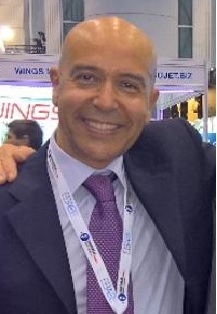Hermeus Flies Quarterhorse Demonstrator For First Time
Details
More Products & Services
Products & Services
Aerospace | Aviation Week Network
Aviation Week Network
https://aviationweek.com/themes/custom/particle/dist/app-drupal/assets/awn-logo.svg
Home - Aviation Group Marketing
Aviation Week Network
120 data points on over 156,000 commercial and business aviation aircraft, including military transports. Discover the most trustworthy resource for the complete aircraft history, plus ad hoc reports, month-over-month trend analysis and details on expected deliveries through 2050.
People

Andrea Rossi Prudente
Aviation Week Network

Anthony Lim
Aviation Week Network
Sales director

Becca Balmes
Aviation Week Network

Belinda Tan
Aviation Week Network

Brian Everstine
Aviation Week Network
Editor

Eddie Krankowski
Aviation Week Network
Assistant Manager, Tradeshows

erving dockery
Aviation Week Network

Lisa Tan
Aviation Week Network
Senior Marketing Manager

Mark Thomas
Aviation Week Network
Description
High-speed aircraft developer Hermeus has successfully flown its remotely piloted Quarterhorse Mk. 1 demonstrator at Edwards AFB, California, marking a key step toward the follow-on development of supersonic and hypersonic vehicles.
The short flight, which Hermeus describes as a simple “hop,” was achieved after the aircraft completed two high-speed taxi tests earlier on May 21. After takeoff the aircraft climbed briefly to low altitude before making a straight-ahead landing on the base's 6.2-mi.-long dry lakebed Runway 15/33.
“We knocked it out of the park,” Hermeus founder and CEO A.J. Piplica says. “We did everything, kind of all in-plane straight down the lakebed here. We got all the test points that we wanted. It was really a simple flight. The purpose of this vehicle was just to takeoff and land.”
“The intention never was really to go clear a big supersonic envelope or anything like that. It was just ‘build the airplane quickly, design it quickly and test it quickly,' and then go prove it. The vehicle performed pretty much exactly like we expected, certainly within the bounds of all the Monte Carlo uncertainties that we ran,” Piplica says.
The flight also “demonstrates that we can do what we say we can do. We can build airplanes quickly, design them quickly and fly them. Now, I don't have to explain that anymore. Our path explains itself, but now the next thing for us is really [to fly] the second one,” he says. Quarterhorse Mk. 1 at Edwards AFB. Credit: Hermeus
Powered by a 5,000-lb.-thrust afterburning GE Aerospace J85-21, Quarterhorse Mk. 1 is intended to demonstrate the company's ability to fly a high-wing loaded vehicle with high takeoff and landing speeds. Hermeus is using the small delta-wing aircraft to pave the way for a series of larger, more capable Mk. 2 and Mk. 3 test vehicles intended for high-Mach supersonic speeds, as well as a twin-engine Mk. 4 hypersonic production vehicle dubbed Darkhorse.
Darkhorse is expected to form the basis of a low-cost option for a reusable hypersonic or near-hypersonic intelligence, strike and reconnaissance platform for the U.S. Defense Department. It is also designed to lay the groundwork for a piloted high-speed transport design dubbed the Halcyon.
Although Hermeus has not disclosed precise details of the flight, Piplica says rotation speed was “above 150 kt.” and maximum altitude was “around 100 ft.,” with a total flight time of less than a minute. “The pilots were very comfortable. The simulator work that they did was much harder than anything they had on the flight,” he notes.
Hermeus originally planned to conduct several test flights with the Mk. 1 vehicle, which was delivered to Edwards AFB in mid-November. However, delays to achieving flight clearance and the prolonged wet condition of the lakebed forced a rethink, Piplica says.
“We probably won't do any more with Mk. 1, as Mk. 2 is so far along at this point. I think if we'd gotten the aircraft in the air when it was ready back in December, we probably would have done some more. But now we're so deep into Mk. 2 that the airplane will be ready in a matter of months. So, we want to keep the team focused on getting that one airborne and then go hit supersonic flight with that one later this year,” he says.
Similar in size to an F-16, the Mk. 2 vehicle will be powered by a 29,000-lb.-thrust afterburning Pratt & Whitney F100-229 with an integrated precooler, which is the first element of the Hermeus-designed Chimera turbine-based combined cycle (TBCC) propulsion system.
In preparation for integration of the Mk. 2 aircraft, Hermeus has also completed a series of sub-scale high-speed wind tunnel validation tests. Conducted at the U.S. Air Force Academy's tri-sonic wind tunnel in Colorado and Lockheed Martin's 4 X 4-ft. tri-sonic blow down wind tunnel in Texas, the tests evaluated the Mk. 2 across a speed range from Mach 0.6 to Mach 3. “Testing under these supersonic conditions is validating our analytical predictions and assembling the critical dataset necessary to advance the Quarterhorse Mk. 2 build,” Hermeus says.
Although Hermeus originally planned to fly the first elements of the TBCC on a follow-on J85-powered Quarterhorse version, in March 2024 the Atlanta-based company opted instead to develop a more production-relevant F100-powered Mk. 2 variant. The Mk. 1 and 2 versions are therefore quite different, but the development experience is still vital, Piplica says.
“We have one full contextualized repetition through the whole process, right from back-of-a-napkin concept through flight test,” he says. “We've now validated everything from our spreadsheet-based models that we use in the very early phases of the design all the way through our computational fluid dynamics, wind tunnel testing and now flight testing.”
The short flight, which Hermeus describes as a simple “hop,” was achieved after the aircraft completed two high-speed taxi tests earlier on May 21. After takeoff the aircraft climbed briefly to low altitude before making a straight-ahead landing on the base's 6.2-mi.-long dry lakebed Runway 15/33.
“We knocked it out of the park,” Hermeus founder and CEO A.J. Piplica says. “We did everything, kind of all in-plane straight down the lakebed here. We got all the test points that we wanted. It was really a simple flight. The purpose of this vehicle was just to takeoff and land.”
“The intention never was really to go clear a big supersonic envelope or anything like that. It was just ‘build the airplane quickly, design it quickly and test it quickly,' and then go prove it. The vehicle performed pretty much exactly like we expected, certainly within the bounds of all the Monte Carlo uncertainties that we ran,” Piplica says.
The flight also “demonstrates that we can do what we say we can do. We can build airplanes quickly, design them quickly and fly them. Now, I don't have to explain that anymore. Our path explains itself, but now the next thing for us is really [to fly] the second one,” he says. Quarterhorse Mk. 1 at Edwards AFB. Credit: Hermeus
Powered by a 5,000-lb.-thrust afterburning GE Aerospace J85-21, Quarterhorse Mk. 1 is intended to demonstrate the company's ability to fly a high-wing loaded vehicle with high takeoff and landing speeds. Hermeus is using the small delta-wing aircraft to pave the way for a series of larger, more capable Mk. 2 and Mk. 3 test vehicles intended for high-Mach supersonic speeds, as well as a twin-engine Mk. 4 hypersonic production vehicle dubbed Darkhorse.
Darkhorse is expected to form the basis of a low-cost option for a reusable hypersonic or near-hypersonic intelligence, strike and reconnaissance platform for the U.S. Defense Department. It is also designed to lay the groundwork for a piloted high-speed transport design dubbed the Halcyon.
Although Hermeus has not disclosed precise details of the flight, Piplica says rotation speed was “above 150 kt.” and maximum altitude was “around 100 ft.,” with a total flight time of less than a minute. “The pilots were very comfortable. The simulator work that they did was much harder than anything they had on the flight,” he notes.
Hermeus originally planned to conduct several test flights with the Mk. 1 vehicle, which was delivered to Edwards AFB in mid-November. However, delays to achieving flight clearance and the prolonged wet condition of the lakebed forced a rethink, Piplica says.
“We probably won't do any more with Mk. 1, as Mk. 2 is so far along at this point. I think if we'd gotten the aircraft in the air when it was ready back in December, we probably would have done some more. But now we're so deep into Mk. 2 that the airplane will be ready in a matter of months. So, we want to keep the team focused on getting that one airborne and then go hit supersonic flight with that one later this year,” he says.
Similar in size to an F-16, the Mk. 2 vehicle will be powered by a 29,000-lb.-thrust afterburning Pratt & Whitney F100-229 with an integrated precooler, which is the first element of the Hermeus-designed Chimera turbine-based combined cycle (TBCC) propulsion system.
In preparation for integration of the Mk. 2 aircraft, Hermeus has also completed a series of sub-scale high-speed wind tunnel validation tests. Conducted at the U.S. Air Force Academy's tri-sonic wind tunnel in Colorado and Lockheed Martin's 4 X 4-ft. tri-sonic blow down wind tunnel in Texas, the tests evaluated the Mk. 2 across a speed range from Mach 0.6 to Mach 3. “Testing under these supersonic conditions is validating our analytical predictions and assembling the critical dataset necessary to advance the Quarterhorse Mk. 2 build,” Hermeus says.
Although Hermeus originally planned to fly the first elements of the TBCC on a follow-on J85-powered Quarterhorse version, in March 2024 the Atlanta-based company opted instead to develop a more production-relevant F100-powered Mk. 2 variant. The Mk. 1 and 2 versions are therefore quite different, but the development experience is still vital, Piplica says.
“We have one full contextualized repetition through the whole process, right from back-of-a-napkin concept through flight test,” he says. “We've now validated everything from our spreadsheet-based models that we use in the very early phases of the design all the way through our computational fluid dynamics, wind tunnel testing and now flight testing.”

Share
Recent Chats
Share via email
Future: handle WhatsApp here
Future: handle LinkedIn here
Future: handle Twitter here
SUBMENU HERE
Share via Chat
Copy Link

